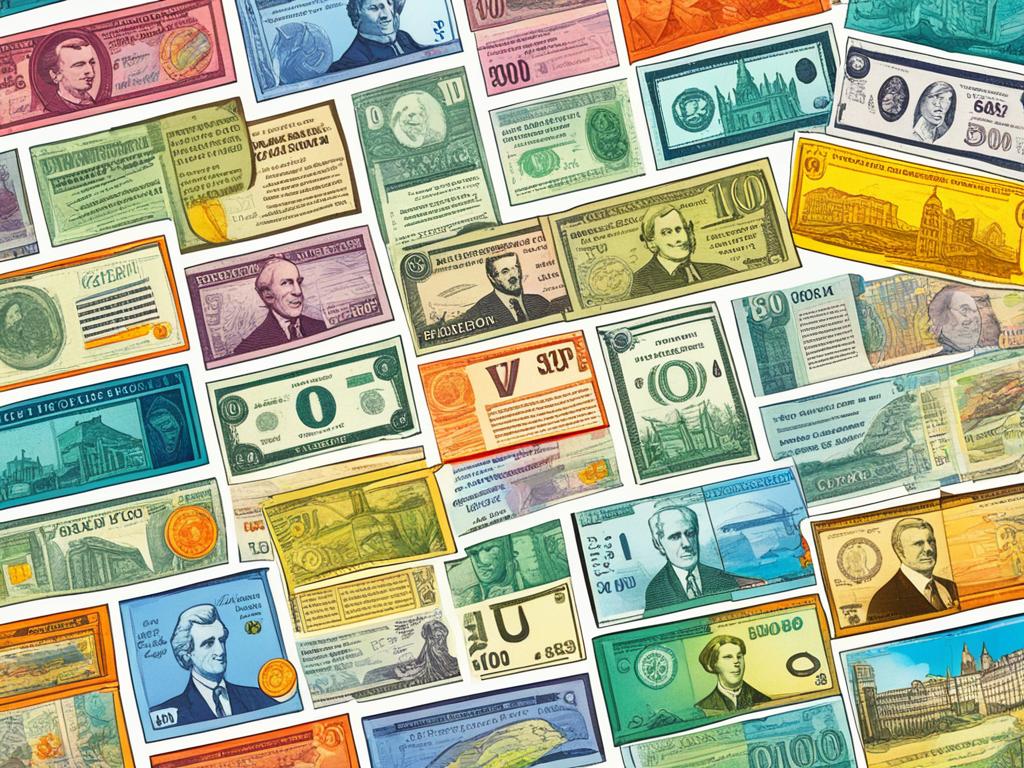Going abroad means getting smart about exchanging money. My top pick is usually my local bank or credit union. Here, buying foreign currency is easy, affordable, and fair1. I trust my bank’s exchange rates, knowing they’ll help me get the most out of my money. This way, whether I’m exploring historic places or trying new foods, I’m all set.
I’ve learned a lot about exchanging money as a travel and finance enthusiast. For instance, the IRS uses your bank’s rate on the day you convert to U.S. dollars for taxes1. I also use websites like Oanda.com and xe.com for up-to-date rates1. These sites are great for knowing the best times and places to exchange money.
This guide has boosted my financial knowledge significantly. It turns each currency exchange into a smooth part of my travels. From buying a coffee in Paris to enjoying cherry blossoms in Japan, it’s all part of the adventure of using foreign currency.
Understanding the Basics of Foreign Currency Exchange
Entering the world of international currency doesn’t have to be scary. If you know a few basics, you can dive in confidently. This guide is designed to be your helper, focusing on the best ways to trade currencies and useful advice for buying foreign money. In April 2022, an impressive US$7.5 trillion was being traded every day in the forex market, showing a big jump from US$6.6 trillion in April 20192.
The biggest deals were in foreign exchange swaps, with US$3.8 trillion traded daily. Spot trading was next, with US$2.1 trillion each day2. Knowing these huge numbers and what they represent helps us understand how international currency trading works today. It’s especially useful for those feeling the push and pull of globalization or looking to make money.
The forex market is always on, running 24/7 through electronic trading. You trade using currency pairs, like EUR/USD, which show the exchange of economic power globally3. The secret to doing well is knowing how bid and ask prices work and following the ‘pip’ movements that show changes in currency value3.
| Currency Pair | Daily Volume (USD) | Most Traded Instrument |
|---|---|---|
| EUR/USD | $2.1 trillion | Spot Trading |
| Other Major Pairs | $3.8 trillion | Foreign Exchange Swaps |
| Total Forex Volume | $7.5 trillion | Various Instruments |
In 1880, the groundwork was laid for today’s currency trading when J.M. do Espírito Santo de Silva got permission to start in the U.S.2. A key moment in forex history happened with the Bretton Woods Accord in 1944, allowing currencies to fluctuate by ±1%2. Looking back at these events helps us understand current trading practices and why they exist.
If you’re new to currency trading, consider getting advice from an expert or start with currency exchange-traded funds. Taking small steps can reduce risks and costs, setting you up for successful, more complex trades later on.
Exchange rates are crucial in all international currency work because they can change due to inflation or central bank actions3. It’s vital to use these rates correctly when converting to U.S. dollars for taxes and financial decisions1. For most people, the U.S. dollar is the standard currency, unless they’re running a business with its own books1.

Smart Strategies for Buying Currency Abroad
Planning for a trip abroad means getting my travel money sorted out first. Doing this is key to avoid extra fees and running out of cash. Before leaving, I look into the best places to exchange money and keep an eye on changing rates. This helps me buy foreign money when it costs less. Thanks to tech like Wise, handling multiple currencies is easy and cheap.
I always get some foreign currency before I leave. This ensures I’m not stuck without money when I get there. I use banks or online services like CXI that deliver to my home. Once there, I prefer local ATMs for more currency. It beats the high prices and extra fees from airport or hotel exchanges. Paying with local money also avoids hidden fees, letting me enjoy my trip more.
When I get back home, my bank often takes back any unused foreign cash. This shows why a good bank with international services matters. Reflecting on these strategies, it’s clear they are essential. They make my trip smooth and free from stress.

